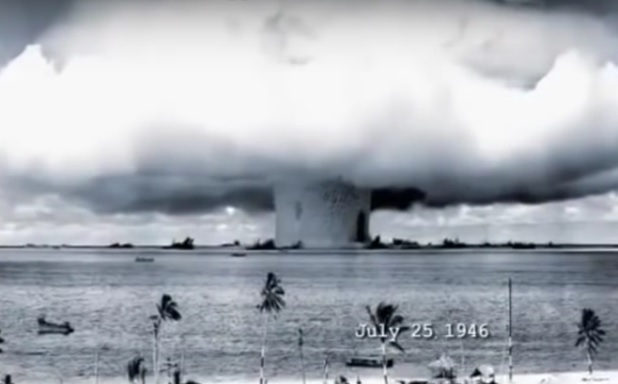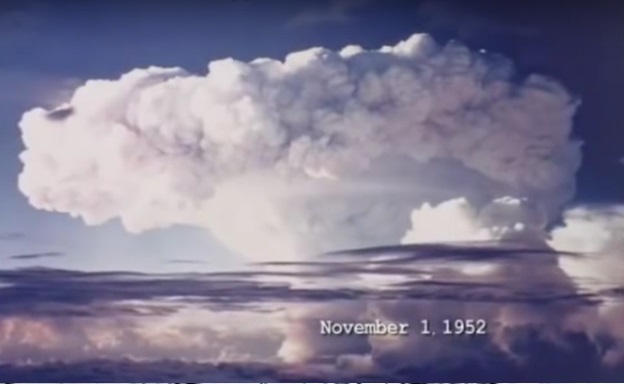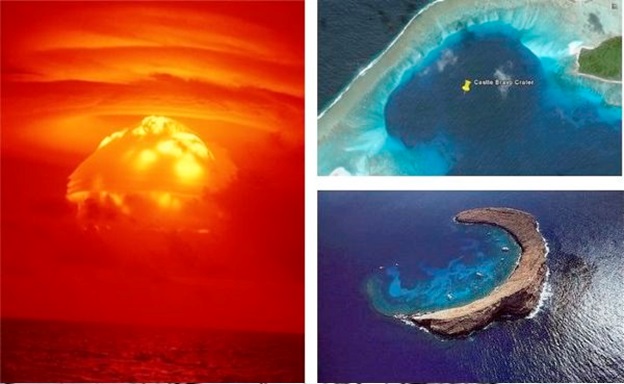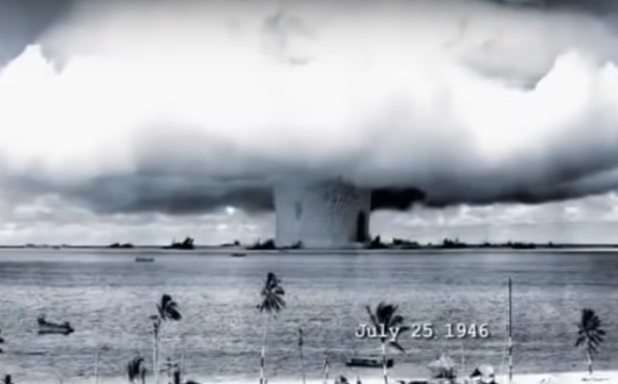As a species, humans have progressed tremendously in the past 10,000 years. We can now fly, talk to loved ones across the globe, access information on remote locations, study the human body and our planet earth with the most sophisticated technological instruments. We not only have landed on the moon and timed the landing with the precision of a second, but have robots investigating Mars for suitability of life. We have satellites looking down on us providing the most astounding views of planet earth. This is just the tip of the iceberg.
The purpose of this article, however, is not to rest on our laurels but to scrutinize the mistakes we have made in the past. This article is intended to provide young professionals globally with a critical perspective of mistakes humans have made in hope that we learn from them.
Very few mistakes we have made as a race come close to the abuse of the most powerful bomb ‘The Atom Bomb’. Though World War II ended with the atomic bombing of Japan, it instigated an arms race known as “the cold war” between the Capitalistic Bloc i.e. The United States and NATO allies and the Eastern Bloc i.e. The Soviet Union and the Warsaw pact allies, which encouraged both sides to build powerful atomic weapons. The scientists and engineers in United States and Soviet Union had only one purpose: To build more powerful nuclear bombs.
In this article we review some of the critical events and lessons learnt.
6 August 1945: The atomic bombing of Hiroshima takes place. After sometime, a second bomb is dropped on Nagasaki by the United States. This basically ends World War II killing 150,000 people! But a lot more people die as a result of radiation from the bombing. This marked the beginning of the era of mass destruction. Joseph Stalin, the then General Secretary of the Soviet Union and the Dictator of the State decides he too wants to own a nuclear weapon, the Atom Bomb.

20 August 1945: Stalin orders Russian scientists and engineers to build him an Atom Bomb.
1946: U.S decides that it will test all its nuclear weapons on an Island 2700 miles southwest of Hawaii, Bikini Atoll. The native people living there are moved to a different island. A fleet of 90 Japanese, American and German warships are assembled in a lagoon near the island to witness the power of the Atomic Bomb.
25 July 1946: The first test of the Atom Bomb is conducted and all warships assembled in the vicinity are destroyed. At this point, only the United States knows how to build an Atomic Bomb.
29 August 1947: The Soviets tested their first Atom Bomb which was a copy of the Nagasaki bomb. The likeness was so much that it was believed that there were spies in the Los Alamos Project making the Atomic Bomb in United States.
1950: The spies are caught and 4 days after, the United States announces that it will design even more powerful weapons. The need to strike balance created a great rush in design exercises which resulted in the creation of the Hydrogen Bomb. The first Hydrogen Bomb intends to draw power from a fission reaction unlike the earlier Atom Bombs which worked as a result of a fusion reaction (splitting of atoms under immense pressure releasing vast amounts of energy i.e. 20 Kilotons which is equal to 20,000 tons of TNT). In comparison, the energy released from a Hydrogen Bomb is measured in Megatons (Millions of tons of TNT). At this point the US scientists and engineers believed that it is only a matter of time before the Russians will catch up. So now it is up to the Los Alamos scientists and engineers to build the world’s first thermo-nuclear bomb, the Hydrogen Bomb, codenamed ‘MIKE’.
1 November 1952: The first Hydrogen Bomb is tested, the world’s first man made thermo-nuclear reaction. But it weighed 82 tons and was not of much use.
12 August 1953: There is intense debate as to which group created the first portable Hydrogen Bomb. There is still debate to this day. But it is strongly believed that the Soviets built it. Could the United States do the same?
March 1954: 6 months later, Los Alamos answers the Soviet Union by creating a Hydrogen Bomb from solid fuel made from the lightest metal on earth, Lithium, specifically Isotope Lithium 6. America’s super bomb is codenamed ‘Castle Bravo’. The bomb was only tested with liquid Hydrogen and not Lithium 6 which resulted in incorrect calculations. Even then, United States decides to test Castle Bravo on the northwest side of the Bikini Island. The bomb is to be triggered from the island of Enyu, 20miles away, from a water tight bunker protected by reinforced concrete and massive doors. 48 hours before triggering, all personnel except the firing men, are removed from Bikini Island. The expected energy from the explosion is 5 Million tons equivalent of TNT. If the explosion produces a higher energy release, no one within the 20 mile radius will remain alive.
Question to consider: Why did the US test a bomb which they knew was never simulated with liquid hydrogen? Isn’t it an obvious lesson to never execute without thorough testing, especially when it’s the case of a bomb? It was poor judgement on behalf of the United States to ever test the Hydrogen Bomb without full knowledge.

1 March 1954: Castle Bravo is tested. The energy, heat and light from the explosion was so high that personnel on a ship 23 miles away could see the bones in their bodies. The aftershock produced a Tsunami. The explosion even got so close to the bunker that the concrete walls creaked. So what went wrong? Castle Bravo was not only made up of 30% Lithium 6 but also 70% Lithium 7 which was thought to be inert. However, on post analysis it was confirmed that the explosion went out of control and as a result, Lithium 7 became radioactive. This was something the scientists and engineers were not aware of, but should have been. Castle Bravo was designed to yield 5 Megatons of TNT, but because of the miscalculation, it resulted in an explosion of 15 Megatons of TNT. It also was directed towards Japan, another unexpected variation in the explosion that was not as per designs. There was a national outcry over radiation effects that not only affected people but also marine life.
Question to consider: How much bomb testing is too much testing when it comes to destruction of natural resources? I think that considering that both parties, the US and Soviet Union, acted on fear alone of being bombed by nuclear weapons, it was already time to stop creating more powerful bombs.

Before and After the Castle Bravo explosion on Bikini Island, Image courtesy of MichaelJohnGrist.com
1960s specifically 1961: By this time, United States has all the necessary technology and expertise needed to build bombs of all sizes, ranging from a few kilotons to megatons capacity. It was also in this time, that Soviet Union scientists and engineers started building long range missiles in response to the Castle Bravo. Relations between US and Soviet Union deteriorate even further. At this time, John F. Kennedy was sworn in as the 35th president of the United States.
July 1961: President Kennedy decided to station half of the bombers in Europe on more alert. This freightened Nikita Khrushchev, the First Secretary of the Central Committee of the Communist Party of the Soviet Union who then called on Russian scientists and engineers to show US what the Soviet Union is capable of. He wanted the biggest bomb ever made in history dubbed the Tsar Bomb meaning the King of Bombs. The Castle Bravo exploded at 15 Megatons, but the Tsar was designed to explode at 50 Megatons.
30 October 1961: The seismograph in the US Military Monitoring Station in Alexandria, VA records a massive surge of activity. But the origin of this surge is not an earthquake, it is from a location inside Soviet Union territory. The only explanation to this event is that the Soviets have built a bomb more powerful than the United States ever had, a 50 Megaton weapon deliverable. This is 4000 times bigger than the Hiroshima atomic bomb.
The Soviet Union tested the Tsar Bomb. The most powerful bomb ever made by man, created a mushroom cloud which peaked at 40miles, around 7 times the height of Mt. Everest. Buildings 70 miles away were destroyed, and windows shattered 300miles away. Analysis state that if the Tsar Bomb was detonated on Washington D.C. from an optimum height of 2000 Ft, the initial fireball will kill everything and everybody within 3 miles, people 12 miles away would suffer 3rd degree burns, most building 20miles will be destroyed killing 1 Million people instantly and 3.5 Million in total.
The scientist who designed the Tzar Bomb estimated that 500,000 worldwide will suffer in the coming decades if the radiation deposited by the huge cloud slowly disappeared. The fallout of the Tsar Bomb is still classified. The United States test zone Bikini Island as of 1970 is still radioactive.
1963 – Finally both sides agreed to a Test Ban Treaty performing all further tests underground to avoid fallouts.
So what can Young Professionals learn from this experience today? We can learn that progress for the sake of progress is not as great an idea as it may first seem, that progress at any cost often results in very high costs paid by countries and people of the world. Our lessons learnt are also that politicians must not drive technological progress the way they did during the Cold War. Building such weapons in the name of protection of one’s own countrymen does not make them any less destructive to neither man nor nature. So as scientists and engineers, if we have the capability of building such technology, technology that has the capacity for mass destruction, then it is our duty to ensure that all steps are taken to avoid mass destruction. Power against power and meaningless wars only create destruction of our world as we know it.
Article written by Sneha Kangralkar, IMPACT Assistant Editor
Tags:Atom bombHistoryTechnology



